Stone Spies
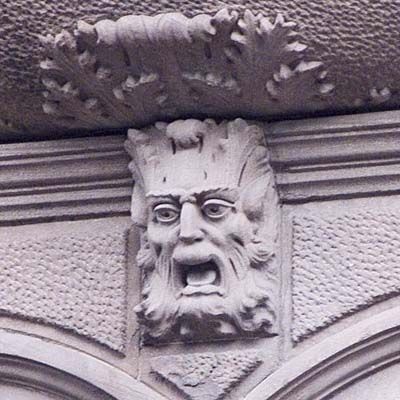
In cities across America, they stare at us with a leering gaze. Some have horns protruding from their heads; others are part animal, part human, with scowls on their faces. We are referring to grotesques: the scary figures carved into stone corbels, keystones, and friezes on building facades. In 12th century Europe, grotesques, as well as open-mouthed gargoyles—which directed rainwater away from buildings—became commonplace, especially on the outside of cathedrals. At the time, the church was trying to convert the largely pagan masses to Christianity. The figures, which were is stark contrast to the saintly sculptures that also decorated buildings, demonstrated to an illiterate congregation the difference between good and evil.
Keystones
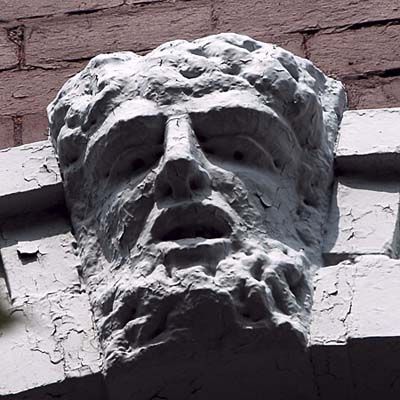
The carving in this keystone positioned at the pinnacle of an arched window casing takes a human form. The man’s open mouth, deep-set eyes, and flowing beard animate him.
Keystones
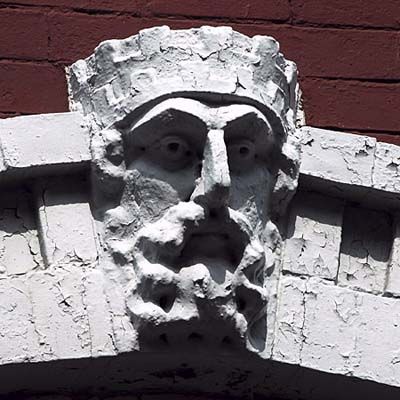
The carving in this keystone positioned at the pinnacle of an arched window casing takes a human form. The man’s open mouth, deep-set eyes, and flowing beard animate him.
Green Man
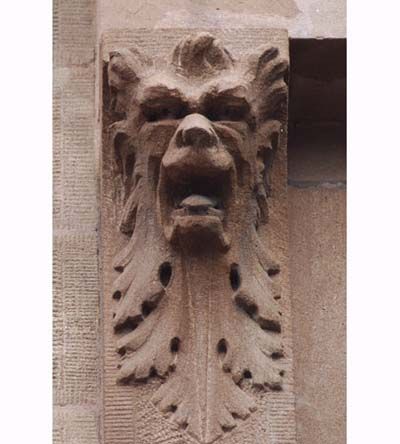
The Green Man—with oak or ivy foliage emanating from his face—is a common theme of grotesques and carvings dating back to the Roman Empire. The name Green Man, however, is only 67 years old, coined by Lady Raglan in 1939. It symbolizes the synthesis of man and nature, a common theme seen in the following photos. Here the artist combined a lion and human face with foliage.
Visual Story
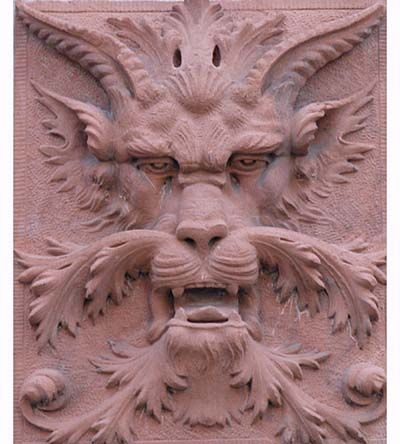
This grotesque combines images of the Green Man and the goat/horned man—a Christian symbol for the devil—with rich Renaissance-style foliage.
Eyes of a Child
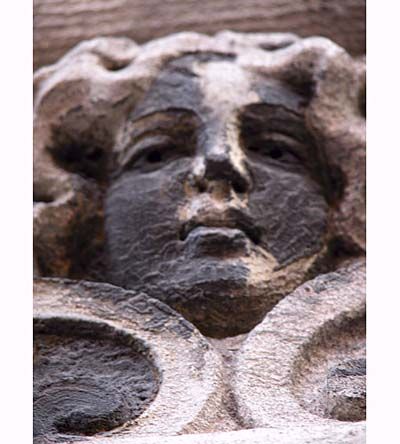
Most of the grotesques in American cities are situated in the Northeast and the Midwest, and were created in the years between 1890 and 1930. “But I’ve seen some beautiful gargoyles in places like Austin, Texas,” says stone carver and sculptor Walter S. Arnold, whose work graces the National Cathedral in Washington D.C., among many other buildings across the U.S. and Canada. When the Great Depression hit in the early 1930s, contractors stopped embellishing residential buildings with grotesques, save for unapologetically opulent projects. This is a child’s face, a common architectural theme.
Free Form
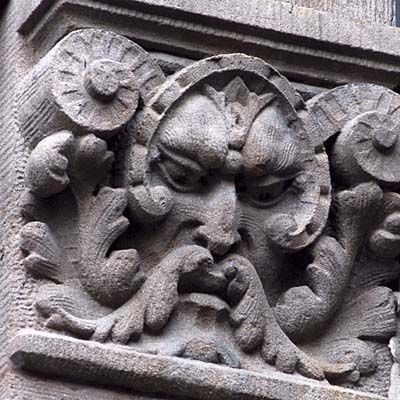
For the sculptor, creating a grotesque or gargoyle rainspout is what improvisation is to an actor or jazz musician. It frees them from all the rules they studied about carving. “The stuff I usually do is mostly classical,” Arnold says. “But with a gargoyle I can take those skills and kind of loosen up.” This grotesque with foliage trickling from his beard and mustache, a horned helmet, and deep set slanted eyes, is a departure from the human form.
Dream World
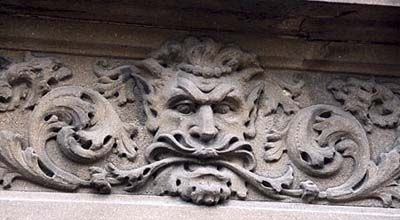
Grotesques bridge the gap between reality and fantasy. They have elements of man in their features, but their overall image is simultaneously not human at all. This grotesque is made in the Renaissance style, following the Green Man theme. The pointed ears lend it an otherworldly aura.
Good Vs. Evil
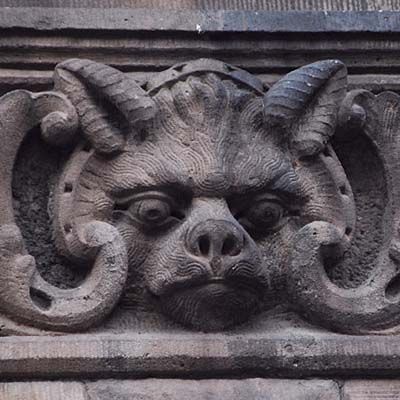
During the Middles Ages, the Catholic Church used grotesques on their churches to tell the populace through the images how faith would protect them. By placing grotesques—representing evil—on the exterior, and religious imagery—representing good—in the interior, they conveyed that if one believed, they would be protected from destructive forces. This grotesque has the face of a bat with angry human eyes.
Devouring Giant
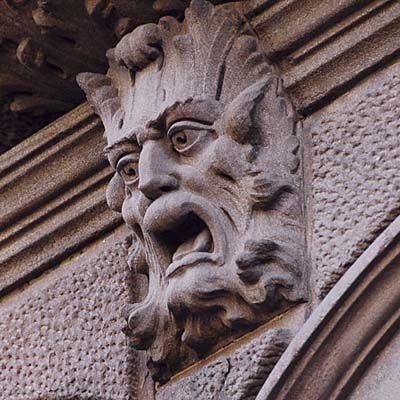
Historically, many gargoyles have their mouths agape, some with their tongues protruding, symbolizing a devouring giant—a force beyond our world that we must pay homage to. However, 19th and 20th century carvers often sculpted their work from pictures in pattern books, and didn’t really know exactly what the original artist’s intentions were.
Vivid Imagination
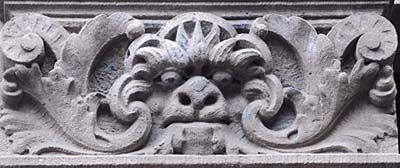
Imagine a person walking alone through a dense forest at night in 12th century Germany. Faces of a fantastic nature would appear in the rustling leaves of the trees, while a mysterious wind would blow to enhance the image. Arnold uses this scene to explain the need for us to create faces not in our likeness. “It solidifies the fantastical experience,” he says. This ape-like grotesque has elements of both the Romanesque and Renaissance architectural styles, and was obviously created by someone with an active imagination.
Poetic Style
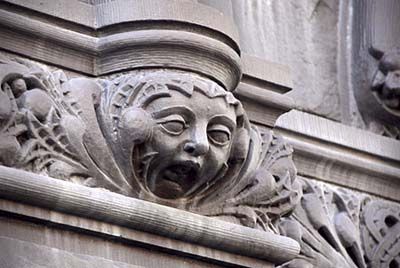
The Gargoyle often make his perch
On a cathedral or a church
Where, mid ecclesiastic style,
He smiles an early-Gothic smile
Written by British born, American writer, Oliver Herford. This rhyme accurately and succinctly describes the duality that a grotesque or gargoyle rainspout portrays. This grotesque serves as a springer, a supporting element at the base of an arch that springs from the wall.
Darth Vader Rises
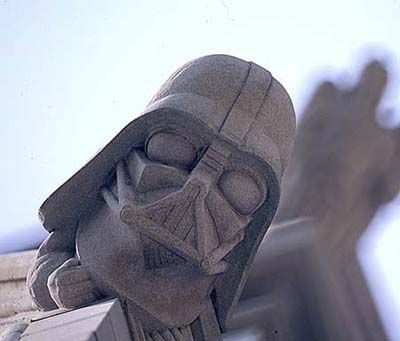
To fulfill the ancient tradition of placing grotesques on cathedrals, an image of Darth Vader from the Star Wars trilogy was sculpted and set high up in the northwest tower of the Washington National Cathedral. See other grotesques there at www.cathedral.org.
Modern Revival
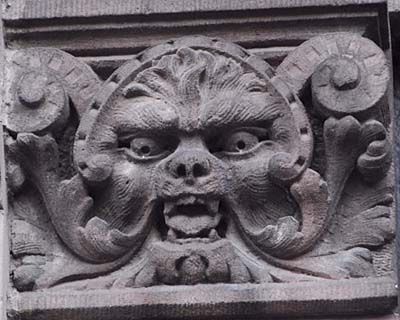
Although sculpting grotesques has been a dwindling art for the past seventy years, there has been a resurgence of architectural ornamentation in the past decade, according to Arnold. That, and the proliferation of grotesque characters in movies like Lord of the Rings, Harry Potter, and the Batman franchise, will ensure the place of grotesques in the world of art for years to come.
